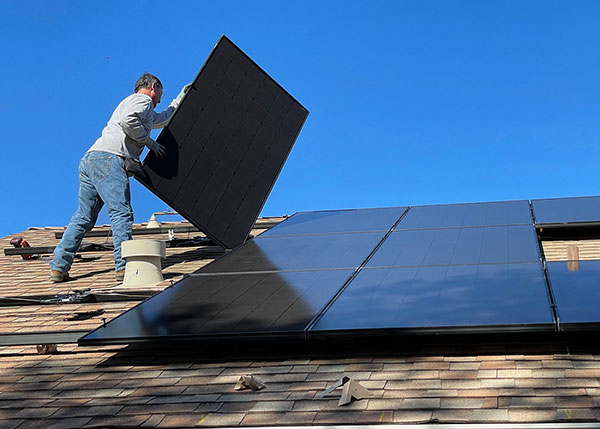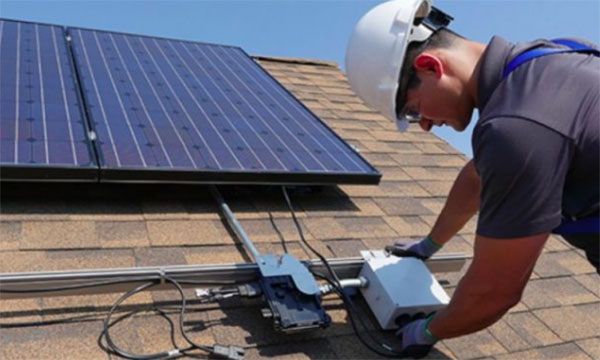Description
A 100-watt solar panel typically produces about 400 watt-hours per day, assuming 4 hours of peak sunlight.

Specifications of a 100-Watt Solar Panel
The specifications of a 100-watt solar panel provide crucial information about its performance, dimensions, and efficiency. These details are vital for consumers and professionals in assessing the suitability of the panel for various applications.
Physical Dimensions
100-watt solar panels typically measure around 47 x 21 inches, but these dimensions can vary slightly depending on the manufacturer and model. The size is a critical factor, as it influences the panel's installation and the space it requires. A compact size makes these panels ideal for small-scale applications like recreational vehicles (RVs), boats, and small residential installations.
Solar Cell Efficiency
The efficiency of solar cells in a 100-watt panel usually ranges from 15% to 20%. This efficiency rate is a measure of the panel's ability to convert sunlight into usable electricity. Higher efficiency means more power output from a smaller area, making efficient panels more desirable for users with limited space. The type of solar cells, such as monocrystalline or polycrystalline, significantly affects efficiency. Monocrystalline cells, known for their higher efficiency, often feature in premium solar panels.
Rated Power Output
The rated power output of 100 watts indicates the panel's electricity generation under ideal conditions. This rating helps users calculate the energy yield over a period, essential for planning energy use and storage. However, actual power output can vary due to factors like
sunlight intensity, panel angle, temperature, and geographic location. Typically, a 100-watt panel produces about 400 watt-hours of electricity per day, assuming 4 hours of peak sunlight. This output is sufficient for charging small electronic devices, powering lights, or contributing to a larger solar system.

Power Output of a 100-Watt Solar Panel
The power output of a 100-watt solar panel is a critical factor for users relying on solar energy for their power needs. Understanding how to calculate the energy yield and the factors affecting the power output is essential for efficient use and planning.
Calculating the Energy Yield
To calculate the energy yield of a 100-watt solar panel, multiply the panel's wattage by the hours of peak sunlight. For instance, with 4 hours of peak sunlight, a 100-watt panel generates approximately 400 watt-hours of energy per day. However, this is an ideal scenario, and actual energy yield can vary.
Factors Affecting Power Output
Sunlight Intensity
Sunlight intensity greatly impacts the power output. In areas with higher sunlight intensity, such as in equatorial regions, a 100-watt solar panel will produce more energy compared to regions with lower sunlight intensity. The panel's exposure to direct sunlight is crucial for maximizing energy production.
Panel Angle and Orientation
The angle and orientation of the solar panel are pivotal for optimal energy absorption. The best angle varies depending on the geographic location and the season. Panels oriented towards the equator (south in the Northern Hemisphere and north in the Southern Hemisphere) typically receive more sunlight.
Temperature Effects
Temperature also influences solar panel performance. Contrary to popular belief, extremely hot conditions can reduce efficiency. Most solar panels operate best in mild temperatures. High temperatures can decrease efficiency by 10-25%, impacting the overall power output.

Installation and Setup Considerations
Proper installation and setup of a 100-watt solar panel are crucial for optimizing its performance and efficiency. Selecting the right location, ensuring proper mounting and angling, and effectively connecting multiple panels are key factors that influence the overall output and effectiveness of the solar system.
Optimal Installation Locations
Choosing the best location for installing a solar panel is essential for maximizing its energy production. Key considerations include:
- Exposure to Sunlight: Locations with direct and unobstructed sunlight for most of the day are ideal.
- Avoidance of Shade: Areas under trees or shadowed by buildings can significantly reduce efficiency.
- Orientation: In the Northern Hemisphere, south-facing installations capture maximum sunlight.
- Roof Condition: The installation site, especially if it's a roof, should be structurally sound to support the panels.
Mounting and Angling for Maximum Efficiency
Mounting and angling the solar panel correctly are critical for optimizing its power output.
- Optimal Angle: The angle should match the latitude of the location to maximize sun exposure throughout the year.
- Adjustable Mounts: These allow for angle changes between seasons to adapt to the sun's position.
- Sturdy Mounting: Ensuring the panels are securely mounted to withstand weather conditions like wind and rain.
Connecting Multiple Panels for Increased Power
For higher energy requirements, connecting multiple 100-watt solar panels is effective.
- Series vs. Parallel: Panels can be connected in series to increase voltage or in parallel to increase current, depending on the system's needs.
- Compatibility: All panels in the system should have compatible electrical characteristics for efficient performance.
- Safety Considerations: Proper wiring and overcurrent protection are essential for safety and system longevity.

Real-World Applications of 100-Watt Solar Panels
100-watt solar panels have become increasingly popular due to their versatility and suitability for a variety of real-world applications. From residential uses to powering recreational vehicles and supporting off-grid living, these panels offer efficient and renewable energy solutions.
Residential Uses
In residential settings, 100-watt solar panels are ideal for:
- Supplementing Home Energy: Reducing reliance on the grid and lowering electricity bills.
- Powering Outdoor Lighting: Ideal for garden lights, security lights, and patio lighting.
- Charging Electronic Devices: Useful for charging phones, laptops, and other small devices.
Recreational Applications (RVs, Boats, etc.)
For recreational purposes, 100-watt solar panels provide convenient and reliable power:
- RVs and Campers: Powers lighting, small appliances, and keeps batteries charged.
- Boating: Used for charging batteries, running small electronic devices, and providing emergency power.
- Portable Power: Handy for camping trips, providing a sustainable power source off the grid.
Off-Grid Applications and Remote Power Needs
100-watt solar panels are a boon for off-grid and remote applications:
Remote Cabins: Powers lighting and small appliances, making off-grid living more comfortable.
Telecommunication Equipment: Used in remote areas to power communication devices.
Water Pumping Systems: Ideal for small-scale irrigation or water supply in remote areas.







